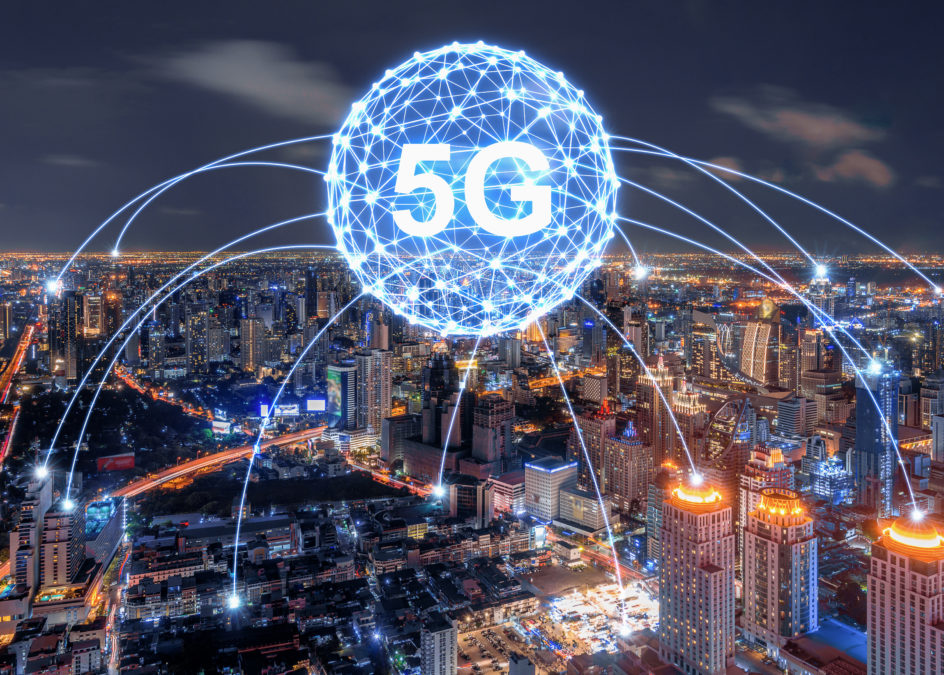As 5G approaches, businesses are optimistic.
So optimistic, in fact, that 80% of communication service providers believe that the introduction of 5G will enhance revenue opportunities with enterprise customers — according to a survey from Amdocs.
As a result, around a third of operators plan to offer 5G services commercially to this sector by the end of 2019. But, this figure will more than double by the end of 2020.
“Operators of 5G networks can support mission-critical enterprise communications, with performance backed by service-level agreements,” commented John Delaney, associate VP of Mobility Research at IDC. “Our research shows that mobile operators are optimistic about the potential for 5G to support an expansion of their role in the enterprise market.”
Related: How will 5G revolutionise the manufacturing sector? – The successful adoption of new technologies into the manufacturing sector depends on the rise of 5G, according to Brendan Lynch, board Member of the Worcestershire 5G Consortium.
Key findings
• Operators are geared up to seize the first mover advantage: Evidence points to the existence of a race mentality. Operators in Europe are confident about being first to market with 5G enterprise services, with 72% claiming they will achieve this.
• Customer demand is driving 5G progress: Over 65% of operators in Europe confirmed their enterprise customers have already expressed interest in 5G services. Operators in the region are responding to this demand, with 85% expected to roll out enterprise services by end of 2020.
• New revenue opportunity is the primary driver: Nearly 80% expect 5G to expand revenue opportunities with enterprise customers, with 35% predicting they would be able to grow their revenue by 5-10% within the first two years. Furthermore, operators in Europe are optimistic that they will be able to leverage early 5G deployments to enhance existing enterprise services, such as unified communications as a service (UCaaS) and software-defined wide area network (SD-WAN). Operators in Europe have identified healthcare as the sector that offers the most revenue potential for 5G. This is closely followed by government and public sector in second place, while automotive and manufacturing jointly occupy the third spot. These players will be exploring new routes to market for rolling out 5G services to businesses, with over 40% planning to leverage strategic partnerships, specifically through relationships with vertical services partners.
• Delivering new business models for the enterprise: 16% of operators in Europe believe 5G will provide enterprise customers with a platform to support a range of new business models. Meanwhile, nearly all operators in the region believed the overwhelming use case for 5G in the enterprise will be to replace existing fixed-line connections with mobile services. This was backed up by their claims that the most common types of devices they expect to ship to support 5G services in the early stages will be routers, PC dongles and eventually, handsets.
• Reducing operational expenditure is another key motivator: More than 70% expect to achieve a greater than 10% reduction in operational expenditure once 5G is deployed. Primarily, this is likely due to the role of artificial intelligence and machine learning in increasing automation of 5G operations and maintenance. Operational cost reduction will also be driven by software-defined self-service and provisioning, efficient 5G radio wave form squeezing more value from spectrum assets, and virtualisation enabling 5G networks to be controlled by commodity servers in data centres.
• New and enhanced software systems are critical: Creating and monetising new 5G enterprise services will require significant enhancements to the OSS/BSS and other software systems. More than 70% believe that upgrading their OSS/BSS and deploying virtualised network infrastructures will be essential for delivering 5G enterprise services. These were both areas that respondents in the accompanying in-depth interviews described as top-of-mind. Furthermore, nearly 55% felt artificial intelligence and machine learning packages will be critical to ensuring a better customer experience, while over half said they would need to enhance their service orchestration tool (e.g. ONAP).
• Market education and expectations setting will be crucial: Nearly 20% indicated that enterprise demand is lacking for 5G services. However, nearly half said that their enterprise customers have either expressed interest or were actively pushing them for specific 5G-enabled services. This means that operators will need to upgrade their vertical-specific domain knowledge to convert interest into commercial applications and services once 5G capabilities are rolled out. Also, they will have to educate the market with specific use cases and set their customers’ expectations around business benefits to attract those customers who show little to no active interest in 5G.
See also: The continuing rise of mobile edge computing, 5G and IoT security, hot topics for 2019 – IoT a new cyber battleground, the rise of mobile edge computing and the arrival of 5G, Nick Offin from Toshiba gazes into his crystal ball with predictions for 2019.
Comment
“The survey clearly demonstrates that operators see 5G as a means to restore value around core connectivity services for business customers.” said Matthieu Loreille, VP head of Consumer, Enterprise and Technology Marketing at Amdocs.
“5G technologies such as network slicing will allow them to tailor the performance, security level and characteristics appropriate to each business, opening up differentiating monetisation opportunities. Furthermore, by leveraging additional technologies such as artificial intelligence, edge computing and hybrid cloud, operators will be strongly positioned to support enterprises in their digital transformation journey. Effectively, this enables them to shift connectivity to the heart of their solutions with meaningful value-added services on top such as cybersecurity, cloud migration, hybrid cloud operations and many more.”
Regarding Network-as-a-Service (NaaS), Loreille added, “5G, together with complementary technologies such as cloud, network ‘softwarisation’, virtualisation and automation will make this service a reality for business customers. This will enable them to build their own networks, aided by intuitive self-service portals that enhance the enterprise digital customer experience. But it is against this background that the diversity of 5G-enabled service offerings and new ways of consuming them will stretch the IT supporting stack, meaning that in many cases, they will need to be gradually modernised.”







